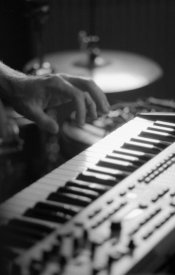I think I have just read in this thread which film setting was used for the movie, Young Frankenstein. Just take a 400 film with a relatively long toe to begin with, chop two zones off even that by using gross underexposure, and you'll have ample creepy dark spaces for a monster to emerge from. "Smoke good ....Fire good .... good for burning underexposed negatives."
One can get away with significant areas of blank black in a small print, even a contact print from a large format negative, in a manner that gets downright annoying if viewed on bigger scale. And let's say you do know how to handle pure black in a compositional graphic sense like Brett Weston did - in that case, I'd rather underexpose and overdevelop a film with a longer straight line like TMY400, where one simply drops off a cliff at a certain point into sheer darkness, than employ one with a long toe like HP5, where one transitionally drifts from murkiness into mud, and eventually in black. But to each his own, I guess. Just follow the instructions on that Frankendeveloper bottle Igor is carrying around, attach the electrical cables, and then you've got it.










